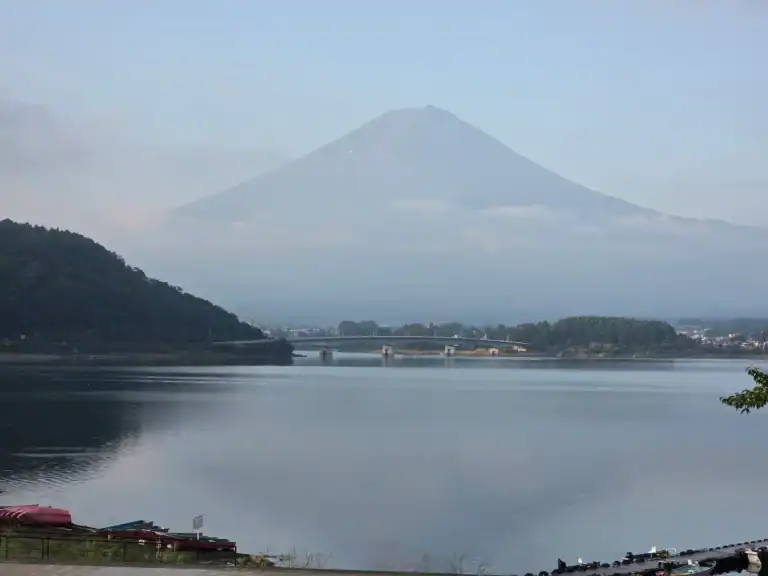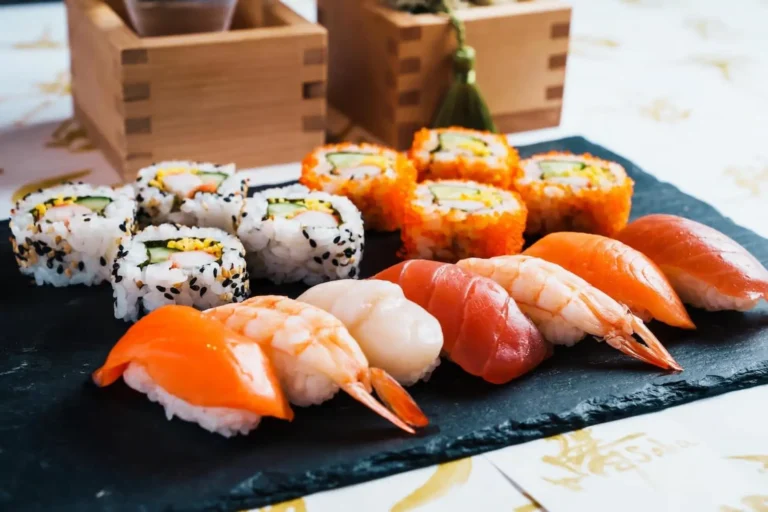Simple Japanese Phrases for Travelers I Actually Used
I arrived in Japan for the first time with little to no Japanese language skills. I felt lost as soon as I walked through the station gates. I searched for simple Japanese phrases for travelers and hoped they would be enough.
Signs moved fast. People moved faster. I worried that I would not manage basic things like ordering food or asking for directions. People around me spoke Japanese with confidence while I clutched a tiny list of phrases.
So, for this blog, I will share with you simple Japanese phrases for travelers, especially if it is your first time, so you can move around with confidence and enjoy Japan with ease.
This is not a grammar lesson. You do not need to memorize sentence structures. You do not need to study for hours. You get simple phrases that worked for me in real situations.
I used them in restaurants, trains, shops, hotels, and convenience stores. These tools helped me move around with confidence, even though I started with zero knowledge.
You learn practical lines that you can say right away. You learn when to use them and why they help. These are ideal for beginners who want quick results.
This post contains affiliate links. If you book through them, I may earn a small commission — at no extra cost to you. I appreciate your support! Read our full disclosure.
Polite Basics Every Traveler Should Know

Basic greetings helped me every day. I used simple words, and they made each interaction easier.
|
English |
Japanese |
|
Hello |
Konnichiwa |
|
Goodbye |
Sayonara |
|
Please |
Onegai shimasu |
|
Thank you |
Arigatou gozaimasu |
|
Sorry |
Gomen nasai |
|
Excuse me |
Sumimasen |
You can use these in stations, shops, and cafés. A small bow with a quiet “sumimasen” helps when you need to pass people on crowded trains. You can use it as you move toward the door before you stop.
You can use “Arigatou gozaimasu” or just simply “Arigatou” when staff hand you a receipt, guide you to a platform, or bring you your meal. People appreciate simple effort and respond with kindness.
You can use “Gomen nasai” when you bump someone in a busy corridor or step in the wrong line. A short sorry clears tension fast and keeps interactions smooth.
You need to remember that you are outside your home country and Japan’s main language is not English. With a few small adjustments and some basic phrases, you can handle daily tasks with ease and move around with confidence.
Ordering Food in Restaurants and Cafes

You can order meals with a few simple lines.
|
English |
Japanese |
|
I will have this, please |
Kore kudasai |
|
Do you have an English menu? |
Eigo no menyu wa arimasu ka? |
|
Is this vegetarian? |
Bejitarian desu ka? |
You can use “Kore kudasai” when you order food in a ramen shop or cafe. You can point at the photo on the menu, say the phrase, and the staff will understand at once. This keeps ordering simple for first-time travelers.
You can use “Eigo no menyu wa arimasu ka” when you enter a restaurant and you want an English menu. Staff often bring one right away or point to a picture menu.
You can use “Bejitarian desu ka” if you follow a vegetarian diet. You can point at the dish and ask this question so the staff can guide you to a safe option.
These short lines help you order without stress and make food stops easier, even on your first trip.
Getting Around, Trains, Taxis, and Directions

|
English |
Japanese |
|
Where is this? |
Koko wa doko desu ka? |
|
How much is it? |
Ikura desu ka? |
|
Does this train go to this place? |
Kono densha wa this place ni ikimasu ka? |
You can use these when you need directions or help in large stations. You can point at a map on your phone and say the phrase. Staff understand right away and guide you to the correct area.
You can listen for clear audio cues on trains. You hear the next stop, the line name, and the transfer options. You can also follow platform numbers and color-coded signs to stay on track.
These tools make each trip easier and help you avoid the wrong trains. You can read more in [Is Tokyo Metro Pass Worth It?] to find tips that guide you through busy stations with less confusion.
One simple phrase can save you during confusing moments. You can picture this. You reach a large station and realize you are standing on the wrong platform.
Trains arrive fast, and you feel unsure where to go next. You walk up to a station attendant, hold up your ticket, and say one short line. A single memorized phrase makes the situation easy to solve.
Quick Tip: You can use apps like Hyperdia and Google Translate to check routes or read signs when you feel unsure.
At Hotels and Ryokans

|
English |
Japanese |
|
Check in please |
Chekku in onegai shimasu |
|
Do you have WiFi? |
Waifai wa arimasu ka? |
|
What time is breakfast? |
Asagohan wa nanji desu ka? |
You can use these Japanese phrases for travelers in modern hotels and traditional ryokans. Most staff speak basic English, but using short Japanese lines shows care and creates a friendly atmosphere.
Quick Tip: You can follow simple customs in ryokans. You remove your shoes at the entrance. You keep your voice low in the hallways. You listen when staff explain the bath area and meal schedule. These small actions help you feel comfortable and enjoy your stay.
Convenience Stores, Shops, and Markets
You can use Simple Japanese in konbinis, markets, and large stores like Don Quijote.
|
English |
Japanese |
|
How much is this? |
Kore wa ikura desu ka? |
|
Can I pay by card? |
Kaado de haratte mo ii desu ka? |
|
Do you have a bag? |
Fukuro wa arimasu ka? |
You can easily explore convenience stores. Many travelers feel surprised by how clean and organized konbinis are. You can pick up quick meals, drinks, and Japanese Convenience Store Food that tastes better than you expect.
You can ask “Kore wa ikura desu ka” when you want to check the price of a snack or drink. Staff answer right away and help you choose what you need.
I had light, funny moments too. Staff in big shops often asked if I had a point card. When I did not understand the question, I smiled and said no. This small mix up felt normal, and the staff stayed patient and friendly.
Bonus: Cute and Fun Phrases That Locals Loved

You can use Simple Japanese to add warmth to your trip. These light phrases help you react to food, shops, and small moments that locals appreciate.
|
English |
Japanese |
|
Delicious |
Oishii |
|
Cute |
Kawaii |
|
Amazing |
Sugoi |
You can use these phrases during meals, shopping, or sightseeing. Each line sounds simple but adds a friendly tone to your interactions. Locals respond with smiles because you show real enjoyment.
I used these short reactions many times. When I said “oishii” in a small cafe, the staff looked pleased and thanked me.
When I said “kawaii” while browsing a stall, the vendor laughed and showed me more items. These small words helped me connect with people in a natural way.
What to Learn Next Before Going to Japan
You can end your trip with more confidence than you started with. Simple Japanese phrases can carry you through meals, train rides, hotel stays, and small daily moments.
You do not need perfect grammar or long study sessions. You only need a few useful lines and the willingness to try them.
If you are learning the language, you might also want to prepare your itinerary and travel essentials.
You can read the [15 Best Kawaguchiko Hotels with Mt. Fuji Views] if you are still choosing a place to stay.
For ideas on where to go, explore [15 Non-Tourist Things to Do in Kyoto for an authentic experience].
If you are unsure about insurance in Japan, you can read [Do I Need Travel Insurance for Japan]. Being prepared makes travel easier and more enjoyable.
It is easier to enjoy your trip when you know where to go, what to expect, and how to use simple phrases that help you handle daily tasks.
And after all, we want to enjoy the trip and make the most of it. Good preparation gives us more time to enjoy the moments that truly matter.
Savor every bit and enjoy your visit. Arigatou, ありがとう.
Read More About Japan
- I Tried the Best Sushi Making Class in Tokyo
- The Best eSIM for Japan That Actually Worked for Me
- 10 Best Day Trips from Tokyo (That Are Actually Worth It)
- Is the Tokyo Metro Pass Worth It?
- 15 Best Kawaguchiko Hotels with Mt. Fuji Views
- 14 Of The Best Cooking Classes In Tokyo For Tourists
- 14 Cooking Classes in Kyoto You’ll Love
- 10 Fun and Authentic Cooking Classes in Osaka
- 15 Non-Touristy Things to Do in Kyoto for an Authentic Experience
- Do I Need Travel Insurance for Japan?
- The 2 Day Tokyo Itinerary You Won’t Feel Rushed
- Japan Road Trip Itinerary: Epic 8-Day Route Guide






